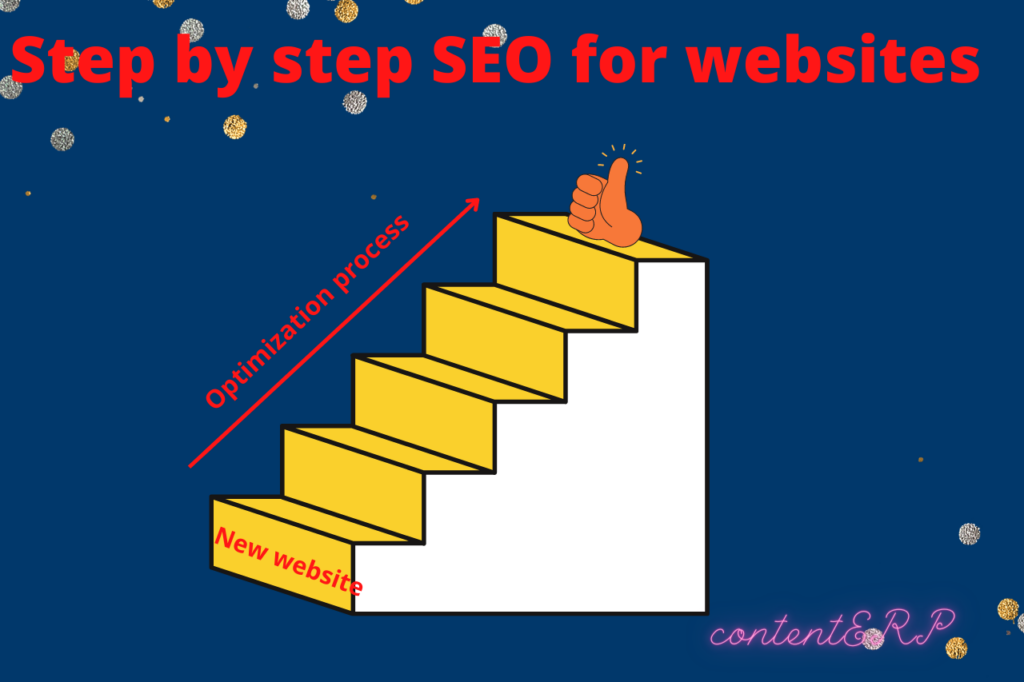How to do SEO for my website step by step
Introduction
Following an SEO plan can be tricky if you don’t know the step-by-step process of it. SEO is for your website marketing campaign. It is so important that numerous companies are dedicated to providing SEO services and making a pretty buck from them. It is estimated that the SEO industry will be worth nearly 2 billion dollars by 2027.
Despite a wealth of information on the internet right now regarding SEO, it might be hard and overwhelming to figure out a starting point. This may make it hard for people trying to do SEO themselves to optimize their websites. Fret not, for we will create a fool-proof step-by-step how-to on getting your SEO campaign up and running.
What are search engines looking for?
Before you begin your campaign, you must understand what criteria search engines use to rank your pages. A search engine’s journey begins with a user’s search. These query searches are used to find information on the web that matches the query’s phrasing or words (known as keywords) to return a result. Search engines do this by going through tens of thousands of web pages daily and indexing the pages that provide relevant information for easier access by users.

SEO is the process by which websites ensure that their content is found by these search engines and indexed properly. It takes time for a new website to be indexed and eventually appear on searches, although a proper SEO strategy can accelerate this process.
There are four main elements that search engines look at when determining which site is more relevant and should show up higher in search engine results pages (SERPs):
- Content: Is the content relevant to what the user is searching for?
- Performance: Does the site load fast, and does it work properly?
- Authority: Is the content useful enough to link to, or do other authoritative sites use that website as a reference or cite the available information?
- User experience: How does the site look and behave? Is it easy to navigate around? Does it look safe? Does it have a high bounce rate?
Step-by-step guide on SEO
Google provides a detailed SEO starter guide that we’ll simplify in this article and other proven market strategies for other search engines.
Website optimization
Optimization is done during the website creation process and involves intentionally tweaking your website to search engine standards. The Google webmaster contains important information and tips on how to go bout this process.
Keyword research
Keywords feature in both the structures of your website and your content. A successful SEO campaign starts with a proper keyword strategy.
Keywords are the link between your web content and searcher intent. Learning and anticipating searcher behaviors is also good practice, so you can tailor your website and content to answer their most basic queries. Here’s our list of some of the best keyword research tools in the market.
Offer new and unique services
Create a new, useful service that no other site offers. You could write an original piece of research, break an exciting product or service, or leverage your unique user base. DO your competitor analysis using tools available on the web to know what your competitors are offering their customers and use this information to create something new.
Website domain name

A proper strategy ensures that the domain name is aligned with the type of content you’re producing. Domain names are a ranking factor and are the first step when search engines try to figure out what your website is about. A great domain name is easy to remember, relevant, and incorporates the main keyword you want to rank for.
It shouldn’t be forced. The domain name should reflect the type of business you’re doing. contentERP.com focuses on helping websites improve their SEO and provides content strategies and management solutions.
An easy, short, and descriptive domain name makes it easy for people to remember the name of your site. It also makes for easy ranking based on the chosen keywords.
Use unique URLs
Search engines need a unique URL per piece of content to crawl, index, and refer users to it. Different content (for example, different products in a shop) and modified content (for example, translations or regional variations) need to use separate URLs to be shown in search appropriately.
Create unique, accurate page titles and metadata
<title> tag
A <title> tag tells users and search engines what the topic of a particular page is. Each webpage on your website should have unique title tags that accurately describe what that page is about. If a webpage appears on a search results page, the contents of the <title> tag may appear as the title link to the document.
- Do not use title elements that have no relation to the content on the page.

Meta description
A meta description gives a summary of what your page is about. It may be a short sentence or a paragraph. Meta description tags are important because search engines might use them as snippets for your pages in Search results.
- As with the <title> tag, do not write irrelevant meta descriptions that have no relation to the content.
- Be as descriptive as possible.
- Avoid saturating the meta description with keywords.
Be mobile-friendly
More than half of the human population today use mobile devices to search the web. The desktop version of a website may be difficult to navigate on a mobile phone. Having a mobile-ready site is critical to your online presence. So critical that Google has made being mobile-friendly an important ranking factor.
A mobile-friendly site satisfies the following criteria:
- Fast loading speeds- This goes unsaid for the desktop versions of websites as well.
- Responsive design that can easily switch from one screen type to another. The algorithm is set to detect responsive sites that fulfill these criteria automatically.
- User-friendly and customer satisfaction. Minimize the appearance of ads on your pages. Make sure that visual content loads properly. Pages that provide poor searcher experiences can be demoted.
- Make sure any structural data on the desktop version is also available on the mobile version.
Organize your site structure

The navigation of a website is important in helping visitors quickly find the content they want. It can also help search engines understand what content the website owner thinks is important. To rank effectively for your target keywords, you need to structure your website so that each page targets its own set of closely related, highly relevant keywords.
Plan navigation based on the homepage
The homepage, also known as the root page, is the most visited page on a website. It is the starting place of navigation when users visit your site. Plan your site’s architecture to make it easy for visitors to move to other pages from this main page.
Use a naturally flowing hierarchical method to list down pages.
Use breadcrumb lists
Breadcrumbs are internal links at the top or bottom of a page, allowing users to navigate to previous pages quickly. Think of it as links pointing down to pages in a hierarchical manner, from the more general root page to the specific sections in a website structure.
Show useful 404 pages
Broken links or pages that do not exist will lead users to 404 pages. A custom 404 page that guides users back to other pages on your site that work can improve their experience.

Submit a sitemap
Submitting a sitemap makes it easier for a search engine to find your website so it can add new or update content on its index. Create and submit a sitemap to Google’s search console or Bing webmaster Tools for faster and easier crawling and indexing.
Optimize your content
Now that your website’s structure, usability, and appearance on search engines is on track, it’s time to focus on content. Knowing your primary and LSI keywords will help you plan your content.
Understand search intent
You’re creating content that a searcher would find relevant, answering their query.
Think about the words a user might search for to find a piece of your content. Users who know much about the topic might use different keywords in their search queries than someone new to it.
Create compelling content
Creating compelling and useful content will likely influence your website more than any other factors discussed here. Users know good content when they see it and will likely want to direct other users to it.
- Offer a different perspective from what users are used to.
- Avoid repetition.
Write content for users, not search engines
While you need to focus on optimization, the content you write should be readable by human standards. Design content around your visitors’ needs, focussing on these key points:
- Write easy-to-read text.
- Avoid keyword stuffing
- Avoid thin content.
- Provide relevant information on your content.
Search engines can now detect ‘bad’ content and can penalize you by demoting you from search results.
Optimize your images
Incorporating visual media into your content can greatly improve its quality. Visual data can be optimized in several ways, namely:
- Using standard file types that load quickly, like png
- Small or medium-sized files make for easier and faster loading
- Make them responsive to load on all types of screens.
- Use the alt attribute to describe your images.
Off-site optimization
Backlinks
Backlinks are extremely important for an SEO strategy. Crawler bots follow links from trusted websites back to yours making it discoverable. Good backlinks will also bring in traffic from other sites.
Seek out partnerships with other websites by writing great original content hat these other sites can source or guest write for a blog.
Future SEO strategy for the win
SEO is constantly evolving, and your site should evolve with it. Create systems within your strategy to check SEO guidelines posted by search engines constantly. Luckily for you, an SEO strategy once in place is easy to maintain.

